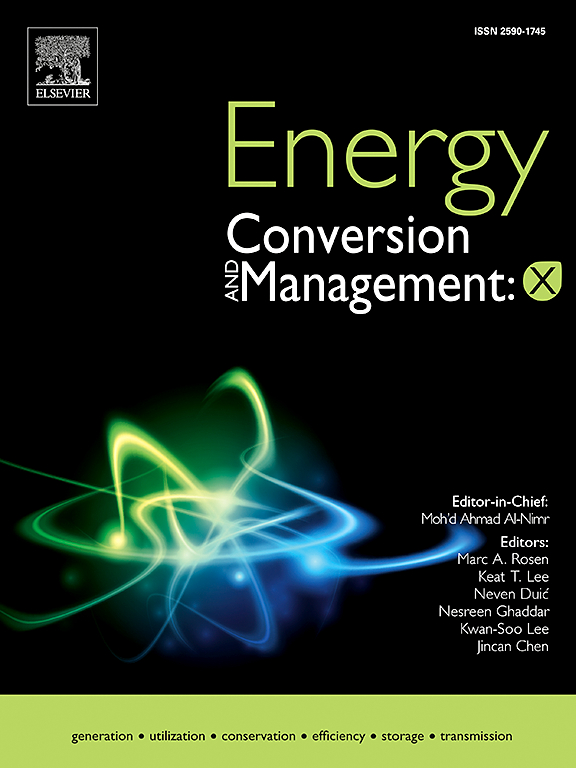One-pot conversion Allium sativum peels into a cost-effective carbon-based heterogeneous acid catalyst for renewable biodiesel production using palm oil refining by-products
IF 9.9
1区 工程技术
Q1 ENERGY & FUELS
引用次数: 0
Abstract
In accordance with the demand for eco-friendly synthesis, this research aims to develop a renewable and economical heterogeneous acid catalyst sourced from garlic peels (Allium sativum bulb) through direct sulfonation, in ordre to improve biodiesel production via the esterification process, utilizing refinery by-products from palm oil as the primary raw material. A detailed characterization of the catalyst’s physicochemical and structural attributes was carried out through a variety of analytical techniques, such as SEM-EDX, XRD, BET, Boehm titration, DLS, and FT-IR. The findings showed that the catalyst featured a significant total acid density of 6.5 mmol/g with an amorphous carbon structure, which was obtained through sulfonation using sulfuric acid concentrate (18.66 mol/l) over a period of 10 h at 343 K. Moreover, the catalyst (GPASB-(OPT)-SO3H) demonstrated a notable conversion of FFA rate of 94.4 % after 3 h of reaction, using a catalyst amount of 6 wt%, carried out at 353 K and a molar ratio of PFAD/methanol of 1:15. The esterification reaction is thermodynamically non-spontaneous and endothermic with activation energy found to be 39.02 kJ/mol. The catalyst exhibited remarkable stability, retaining its catalytic efficiency over four consecutive regeneration cycles. The biodiesel produced adhered to ASTM D-6751 specifications, confirming its high-quality output. In conclusion, the garlic peel-derived acid catalyst demonstrated exceptional performance in terms of activity, stability, and recyclability, making it a viable option for cost-effective and environmentally sustainable biodiesel production.

求助全文
约1分钟内获得全文
求助全文
来源期刊

Energy Conversion and Management
工程技术-力学
CiteScore
19.00
自引率
11.50%
发文量
1304
审稿时长
17 days
期刊介绍:
The journal Energy Conversion and Management provides a forum for publishing original contributions and comprehensive technical review articles of interdisciplinary and original research on all important energy topics.
The topics considered include energy generation, utilization, conversion, storage, transmission, conservation, management and sustainability. These topics typically involve various types of energy such as mechanical, thermal, nuclear, chemical, electromagnetic, magnetic and electric. These energy types cover all known energy resources, including renewable resources (e.g., solar, bio, hydro, wind, geothermal and ocean energy), fossil fuels and nuclear resources.
 求助内容:
求助内容: 应助结果提醒方式:
应助结果提醒方式:


